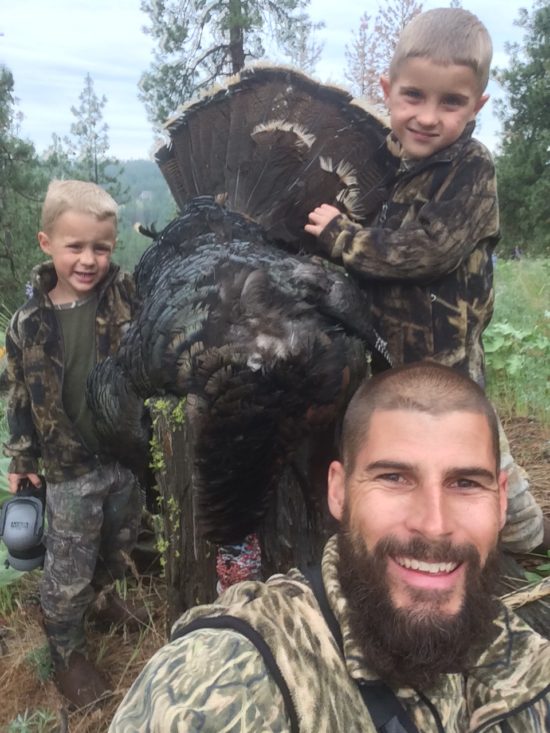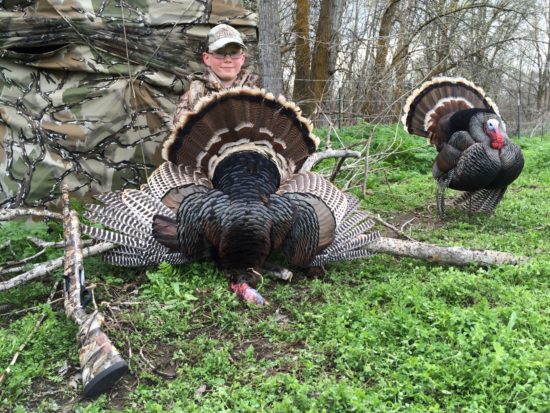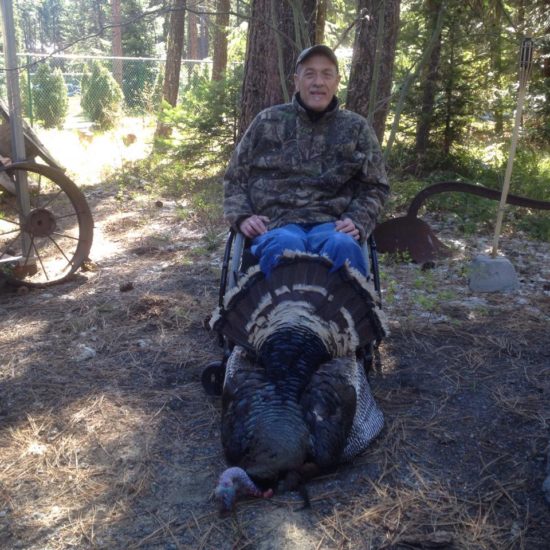
Washington 2019 Spring Turkey Hunting Prospects
If 2019 is anything like recent spring gobbler hunts, somewhere around seven out of every 10 toms will be killed in Northeast Washington.
According to the state Department of Fish and Wildlife, Units 101 through 136 provided 69 percent of 2017’s statewide harvest, 3,331 birds, the third most for this region since 2008.

Even though winter struck late and stuck around into March, Annemarie Prince, WDFW’s District 1 wildlife biologist, doesn’t think it will impact turkey numbers.
“The fields in the Colville Valley are already starting to melt out and there are spots under trees that never had much snow,” she said in early March. “I’d say harvest should be similar to last year’s. I can’t see why it would be up or down significantly.”
Hunters typically focus on farms in the Colville, Pend Oreille and other valleys’ floors, as well as the wooded slopes above them, where typically private timberlands and public ground can be found.
“If the snow sticks around, the birds might stay bunched up a little longer in areas without snow,” says Prince. “For the opener, hunters could think about scouting early and contacting private landowners to gain hunting access. I don’t recommend showing up on opening day all decked out in camo and requesting permission. Like in year’s past, I think the map in our hunting prospects showing good areas for turkeys on public lands is helpful and still a good map.”
That’s a reference to a marked-up page in her fall 2018 hunting forecast document, which can be found by going to wdfw.wa.gov/hunting/prospects.
Speaking of bios’ hunting prospects, Michael Atamian’s prognosis for District 2 – Spokane, Lincoln and Whitman Counties – has some interesting details.
Last fall he reported turkeys were doing “very well” in the Mt. Spokane, Mica Peak, Cheney and Roosevelt game units, which produced 1,132, 232, 410 and 410 birds in 2017 (spring and fall seasons) and that they’re expanding in Harrington, Steptoe and Almota, though these largely open units yielded less than 120 all together.
“Qualitatively, the number of turkeys seen during other survey efforts – moose, deer and elk flights – would indicate the turkey population is healthy in District 2, as would the number of damage complaints our wildlife conflict staff have received,” noted Atamian earlier this month.
“This late winter weather will delay the hens nesting a bit and so decrease their interest in males, which will dampen the strutting a bit, but once the temperatures turn and snow starts to melt off, it will pick up quick,” he forecasted.
Even as his district contributes well to the region’s overall highest-in-the-state take, the knock is the decided lack of public land.
“As for almost all hunting in District 2 some of the best spots are on private ground,” Atamian says, “so I would highly recommend hunters secure private land access if they want to increase their odds.”
There are very scattered patches of state land, and the big paper company’s properties might be another option.
Atamian encourages turkey hunters to also look into fall opportunities.

To the south, the Blue Mountains harvest has been down from high marks earlier this decade, likely due to increased fall hunts meant to lower damage complaints. In spring 2017, 499 turkeys were taken here, representing 10 percent of the statewide kill.
Assistant wildlife bio Mark Vekasy reported big flocks in late winter, likely due to snows, but with no real winterkill issues to report he expected an average season.
“It seems like turkeys are everywhere we would expect them to be – and lots of places we don’t want them – so I can’t point to any particular areas,” he says.
That said, there are some public lands.
“Some out-of-the-way spots that often don’t get as much pressure are on the Chief Joseph Wildlife Area up beyond the road on Joseph Creek, and the George Creek unit of the Asotin Creek WA. The McDonald Bridge and Swegle Units of the Wooten WA on the Walla Walla River are good ones for disabled hunters to access,” Vekasy tips.
“If you’ve got a boat, it would be fun to access some of the Army Corps of Engineers hunt management units along the Snake River,” he adds. “We saw good numbers of turkeys on the breaks of the Snake River during our mule deer surveys, and I don’t think those turkeys get much pressure at all.”
Vekasy does advise hunters to get ahold of good maps showing HMU boundaries.
Outside of one off-the-charts year, Klickitat County has annually kicked out 370 to 514 birds each spring over the last 10 years, and you can expect that to continue.
“The spring 2018 season looks like it was on par with the four previous seasons, which have been very stable at between 400 to 500 birds harvested and a success rate between 25 to 35 percent,” says WDFW’s Stefanie Bergh. “I expect the same this year.”
While cool, damp weather can impact spring production, she points out that last year was hot and dry, leading her to suspect a good hatch in 2018, which could mean more birds down the road.
The Klickitat Wildlife Area may be most popular, but there are scattered Western Pacific Timber parcels west of Highway 97.
“If hunters can secure access to private lands, especially at lower elevations, their chances of encountering turkeys will be good. We also have a spot for disabled turkey hunters that is part of our Private Lands Access Program,” adds Bergh, pointing to WDFW’s 40-acre Lovers Lane parcel just east of the town of Klickitat.

To the north, state managers report that East Cascades flocks are probably at the region’s carrying capacity, in terms of winter severity, available habitat and resident tolerance, though the agency’s latest game report does note an increase in Chelan County in recent years that might be worth checking out.
